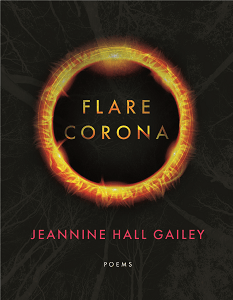Japan, anime, apocalypse
All the horrible news coming in from Japan. I still haven’t heard from one family friend from Japan, but most of the people I know in Japan are safe. But still, the images, the terror of the earthquake, the tsunami, and now the nuclear reactor threats, are so terrible, they won’t stop. I’ve been dreaming every night about Japan. Every morning when I wake up, the death tolls have gone up.
I remember someone wrote that anime was characterized by so much apocalyptic imagery because Japan is the only country that has experienced and survived a real apocalypse. The poems in my second book return to these symbols of destruction and pain in the history of the country, symbols we can only partially understand. Haruki Murakami wrote a book of short stories called “After the Quake” after the Kobe earthquake. Many of the stories dealt with the emotional aftermath of that destruction, the estrangement and non-trust of anything, the lack of a feeling of safety, not trusting what literally was going on underfoot. Still, these symbols and stories can only help us understand a little, like watching footage from thousands of miles away is not the same as understanding what it’s like to be there.
There is little I can do from here, the little amount of money I can donate, the prayers, of course, but really, it’s nothing in the face of so much.
A little while ago, I drove from San Diego to Berkeley to see Roland Kelts interview Hayao Miyazaki about his new film, Ponyo on a Cliff. The young girl of the title is an undersea being that falls in love with a human boy, in a sort of variation on The Little Mermaid, and in visiting him and determining to become human, she throws the universe out of balance, bringing storms to a small fishing village where the boy’s father works as a commercial fisherman and his mother works in an elderly care facility. The moon veers closer to earth, and a tsunami swallows the town, including the sweet elderly folks, the mother, and the two main characters. (Of course, this being a Miyazaki film, these characters aren’t in any way harmed, but are somehow protected inside a magic undersea bubble.) Primordial threatening giant fish prowl the streets of the town, now underwater, as Ponyo and the young boy sail around on a toy boat looking for the mother character. It’s very eerie now watching these images, the storm nearly overtaking the cars of villagers, refugees crowded into tiny boats looking for people to rescue, storms tossing boats into each other. Miyazaki, in this interview, said that it time of national disasters, like tsunami, that the Japanese people became very good at taking care of each other, that the feeling of community was increased by the disaster somehow. I only remember this odd comment now because of what has happened.
Two good places to donate (which have good ratings in terms of spending more on actually helping people than administration:)
—Doctors without Borders
—Northwest Medical Teams


 Jeannine Hall Gailey served as the second Poet Laureate of Redmond, Washington and the author of Becoming the Villainess, She Returns to the Floating World, Unexplained Fevers, The Robot Scientist’s Daughter, and winner of the Moon City Press Book Prize and SFPA’s Elgin Award, Field Guide to the End of the World. Her latest, Flare, Corona from BOA Editions, was a finalist for the Washington State Book Award. She’s also the author of PR for Poets, a Guidebook to Publicity and Marketing. Her work has been featured on NPR’s The Writer’s Almanac, Verse Daily and The Year’s Best Fantasy and Horror. Her poems have appeared in The American Poetry Review, Poetry, and JAMA.
Jeannine Hall Gailey served as the second Poet Laureate of Redmond, Washington and the author of Becoming the Villainess, She Returns to the Floating World, Unexplained Fevers, The Robot Scientist’s Daughter, and winner of the Moon City Press Book Prize and SFPA’s Elgin Award, Field Guide to the End of the World. Her latest, Flare, Corona from BOA Editions, was a finalist for the Washington State Book Award. She’s also the author of PR for Poets, a Guidebook to Publicity and Marketing. Her work has been featured on NPR’s The Writer’s Almanac, Verse Daily and The Year’s Best Fantasy and Horror. Her poems have appeared in The American Poetry Review, Poetry, and JAMA.







Sandy Longhorn
Thinking of you and all you friends/family in Japan. Doing what little that can be done. Refusing to give in to despair.